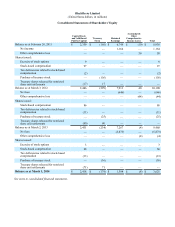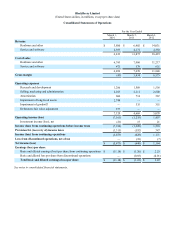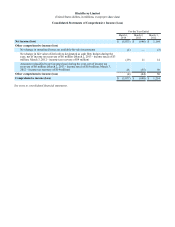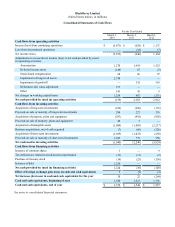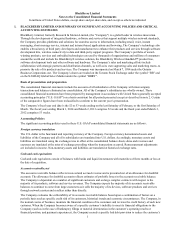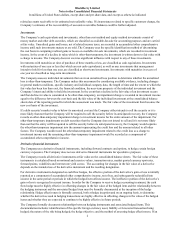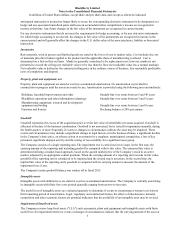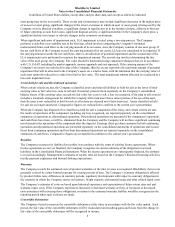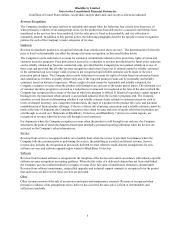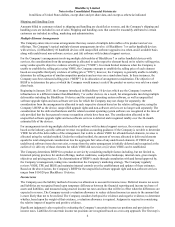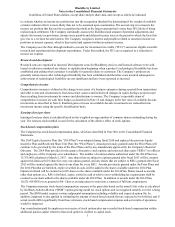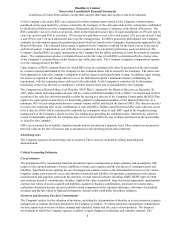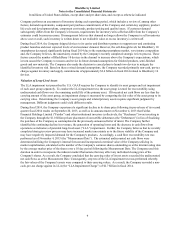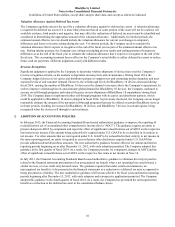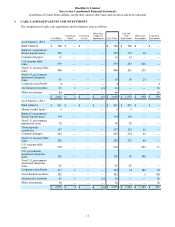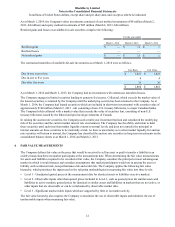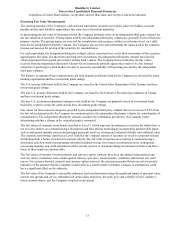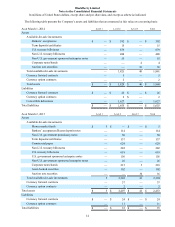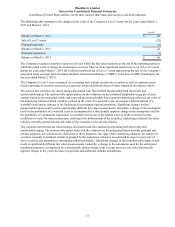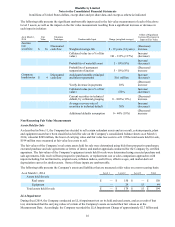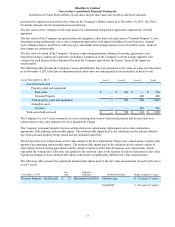Blackberry 2014 Annual Report Download - page 96
Download and view the complete annual report
Please find page 96 of the 2014 Blackberry annual report below. You can navigate through the pages in the report by either clicking on the pages listed below, or by using the keyword search tool below to find specific information within the annual report.BlackBerry Limited
Notes to the Consolidated Financial Statements
In millions of United States dollars, except share and per share data, and except as otherwise indicated
7
to evaluate whether an income tax position has met the recognition threshold by determining if the weight of available
evidence indicates that it is more likely than not to be sustained upon examination. The second step is to measure the
income tax position that has met the recognition threshold as the largest amount that is more than 50% likely of being
realized upon settlement. The Company continually assesses the likelihood and amount of potential adjustments and
adjusts the income tax provisions, income taxes payable and deferred income taxes in the period in which the facts that
give rise to a revision become known. The Company recognizes interest and penalties related to uncertain income tax
positions as interest expense, which is then netted and reported within investment income.
The Company uses the flow-through method to account for investment tax credits (“ITCs”) earned on eligible scientific
research and experimental development expenditures. Under this method, the ITCs are recognized as a reduction to
income tax expense.
Research and development
Research costs are expensed as incurred. Development costs for BlackBerry devices and licensed software to be sold,
leased or otherwise marketed are subject to capitalization beginning when a product’s technological feasibility has been
established and ending when a product is available for general release to customers. The Company’s products are
generally released soon after technological feasibility has been established and therefore costs incurred subsequent to
achievement of technological feasibility are not significant and have been expensed as incurred.
Comprehensive income
Comprehensive income is defined as the change in net assets of a business enterprise during a period from transactions
and other events and circumstances from non-owner sources and includes all changes in equity during a period except
those resulting from investments by owners and distributions to owners. The Company’s reportable items of
comprehensive income are cash flow hedges as described in Note 15 and changes in the fair value of available-for-sale
investments as described in Note 4. Realized gains or losses on available-for-sale investments are reclassified into
investment income using the specific identification basis.
Earnings (loss) per share
Earnings (loss) per share is calculated based on the weighted average number of common shares outstanding during the
year. The treasury stock method is used for the calculation of the dilutive effect of stock options.
Stock-based compensation plans
The Company has stock-based compensation plans, which are described in Note 9(b) to the Consolidated Financial
Statements.
The 2014 Equity Incentive Plan (the “2014 Plan”) was adopted during fiscal 2014 and replaced the previous Equity
Incentive Plan and Restricted Share Unit Plan (the "Prior Plans”). Awards previously granted under the Prior Plans will
continue to be governed by the terms of the Prior Plans and by any amendments approved by the Company's Board of
Directors. The 2014 Plan provides for the grants of incentive stock options and restricted share units ("RSUs") to officers
and employees of the Company or its subsidiaries. The number of common shares authorized under the 2014 Plan was
13,375,000 calculated at March 2, 2013. Any shares that are subject to options granted after fiscal 2013 will be counted
against this limit as 0.625 share for every one option granted, and any shares that are subject to RSUs granted after fiscal
2013 will be counted against this limit as one share for every RSU. Awards previously granted under the Prior Plans and
the 2014 Plan that are forfeited, expire or settled in cash, will be added to the shares available under the 2014 Plan.
Options forfeited will be counted as 0.625 shares to the shares available under the 2014 Plan. Shares issued as awards
other than options (i.e., RSUs) forfeited, expire, settled in cash or sold to cover withholding tax requirements shall be
counted as one share added to the shares available under the 2014 Plan. In addition to awards under the 2014 Plan,
10,521,418 RSUs were granted to Mr. Chen as an inducement to enter into a contract of full time employment.
The Company measures stock-based compensation expense at the grant date based on the award’s fair value as calculated
by the Black-Scholes-Merton (“BSM”) option-pricing model for stock options and is recognized rateably over the vesting
period. The BSM model requires various judgmental assumptions including volatility and expected option life. In
addition, judgment is also applied in estimating the amount of stock-based awards that are expected to be forfeited, and if
actual results differ significantly from these estimates, stock-based compensation expense and our results of operations
would be impacted.
Any consideration paid by employees on exercise of stock options plus any recorded stock-based compensation within
additional paid-in capital related to that stock option is credited to capital stock.


